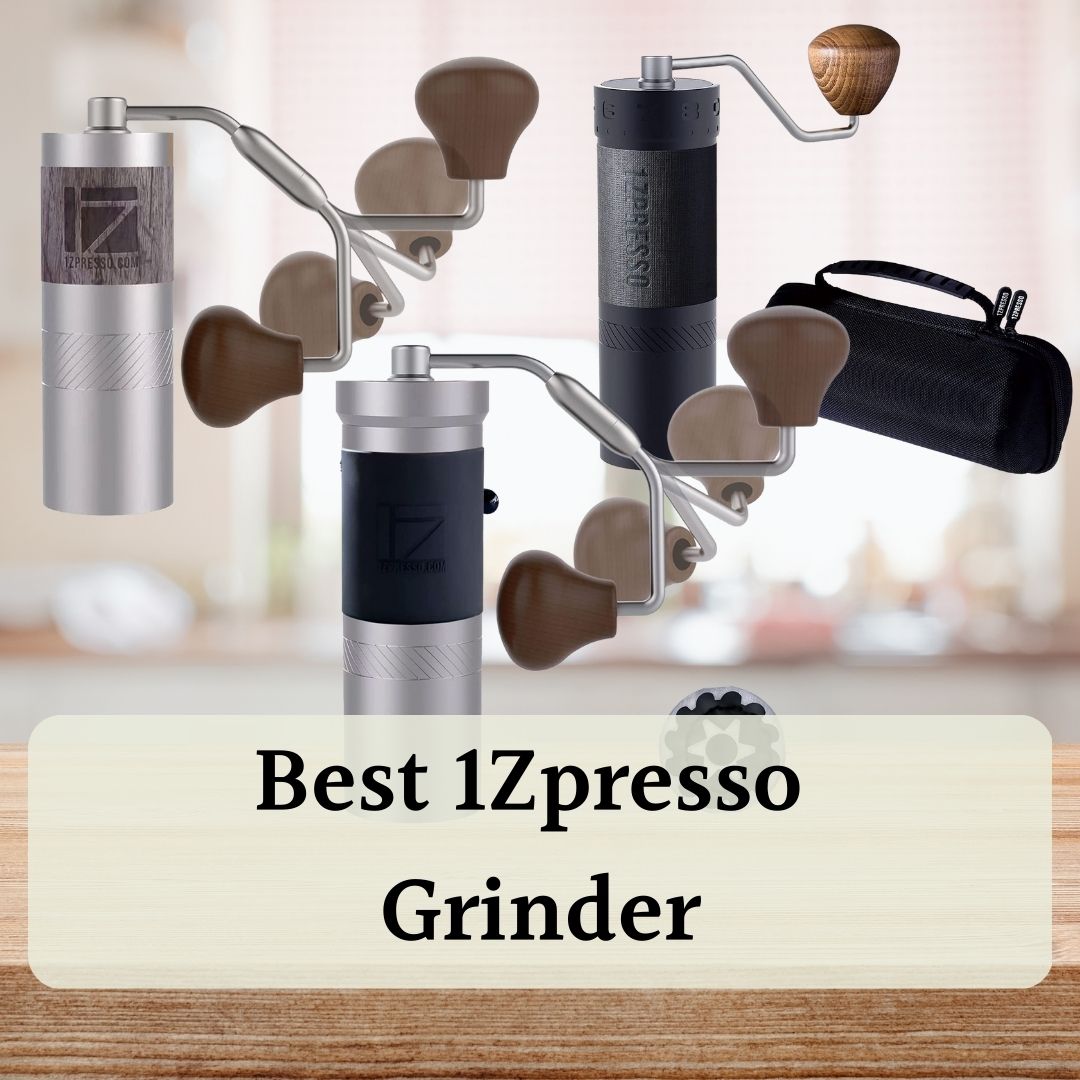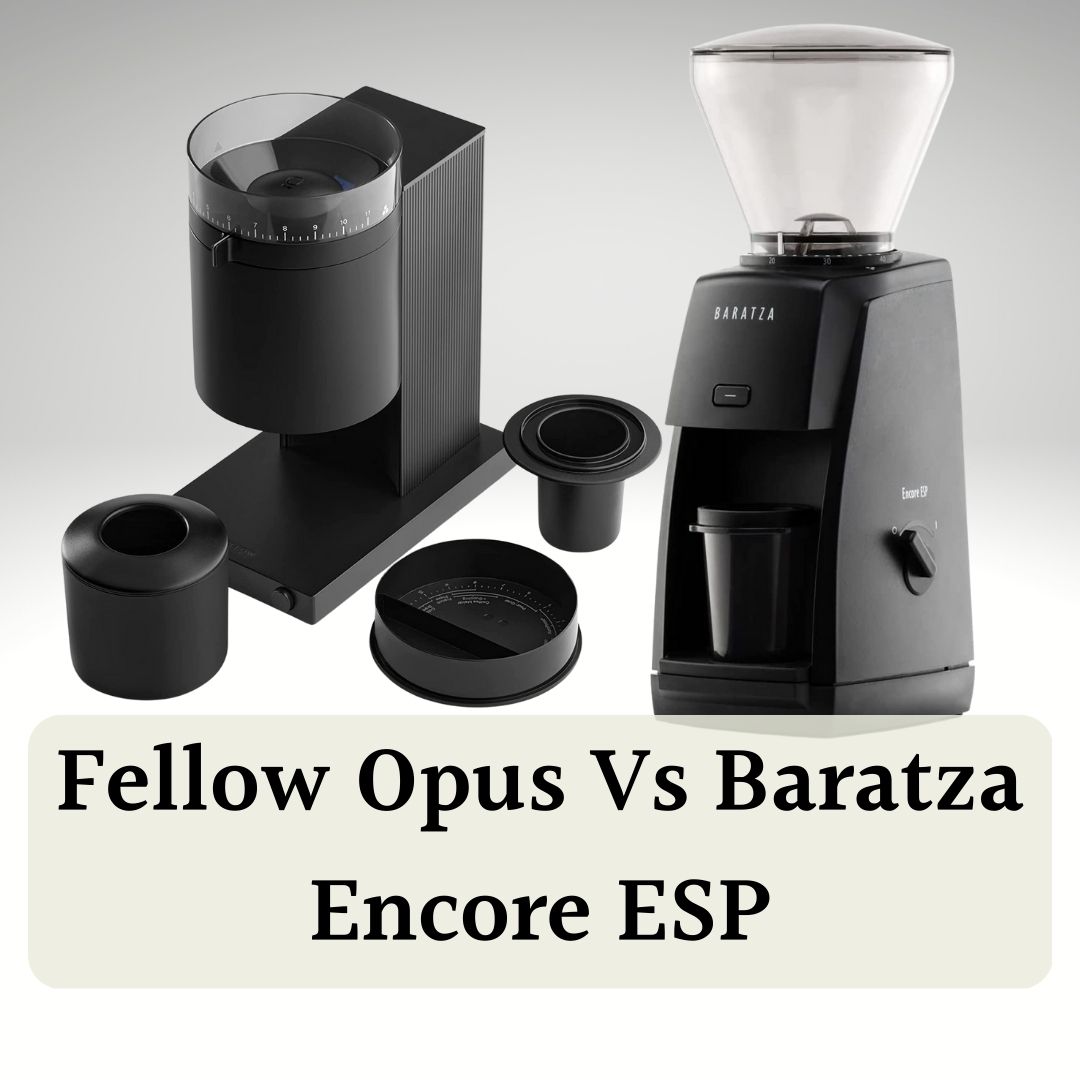A quality grinder achieves even coffee ground size, which in turn results in high-quality coffee. One thing that gets in the way of this is grind retention.
Grind retention is coffee left in a grinder after you’re done grinding. This issue affects all coffee grinders to different extents, and it can be a difference between a flavorful and a stale shot.
There are design factors that influence grind retention. Some models minimize retention better than others, and you can use a bellow to reduce retention. I’ll explain grind retention, what causes it, and highlight the best low-retention grinders.
What is Grind Retention?
Grind retention is coffee grounds that stay in the grinder after you ground a dose and before you grind the next one. In other words, this is a sum total of coffee grounds inside a grinder, located between the burrs, in the burr chamber, and at the end of the chute.
Grind retention also refers to the coffee grinder’s ability to grind the same (or close) amount of coffee that you insert in a grinder. For example, if you add 20 grams of coffee beans to the grinder, and the grinder dispenses 20 grams of coffee grounds, you have zero retention.
Most grinders can’t dispense the exact amount of coffee that you add. For example, instead of 20 grams, you may get 19.8 grams (low retention) or 18 grams (high retention).

We want as low retention as possible because leftover coffee grounds will negatively impact your next coffee. The retained grounds get stale and will be the wrong grind size if you change your brew method.
What Causes Grind Retention
The burr design causes retention in coffee grinders. For example, big flat burrs are notorious for bad retention. Flat burrs retain more ground coffee than conical burrs because of the difference in the grinding mechanism.
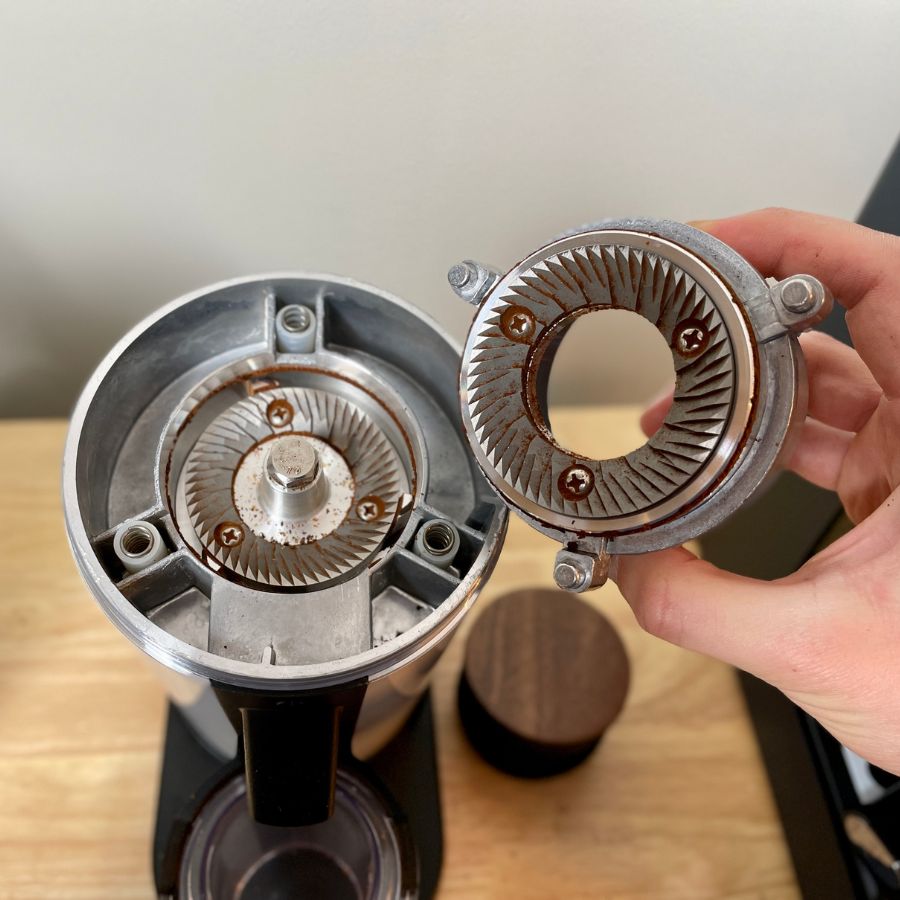
In flat burrs, coffee is ground between horizontally placed top and bottom burrs. The burrs force freshly ground coffee sideways into the inner chamber and the spout.
In conical burrs, the top burr is inside the bottom burr. Because of this design, gravity forces the coffee grounds through the chamber and the spout. The result is fewer grounds left behind.
Another issue that causes grind retention is a poorly designed chute. A long and angled chute (or worse, one that is mostly flat) will retain a significant amount of coffee that will “sit” in the chute. Even the Baratza Encore has somewhat higher retention with its chute.
Short and vertical chutes will have low retention. For example, in the Sette 270, the coffee falls straight through. Sette has a unique design where the inner burr is fixed, and the outer burr spins. There are small slots in the discharge chute, which were intended to improve the grind quality. However, ground coffee falls straight into the portafilter from here, and these slots are getting blocked.
Essentially, this coffee grinder works like a pump. It sucks the beans into the grinder and expels them through the discharge chute. It doesn’t rely on gravity like most other grinders. In theory, it works great. The smaller slots on the chute make the grounds compress and go into the portafilter. The compression reduces the static, so you have a fluffy grind. But, once the coffee grinder stops, there’s nothing to force the leftover grinds through the holes, and they are left behind in the chamber.
Impact Of Grind Retention
The biggest impact of grind retention is stale coffee. Leftover coffee beans are no longer fresh. They mix with freshly ground coffee during the grinding, and you get a stale drink.
One way to get rid of stale beans is purging. You can purge the coffee grinder every day. Use a few grams and grind for a few seconds to flush out stale grounds. If you don’t do this, the stale grounds will affect taste with a bland flavor. The flow rate will also be too quick as the beans dry out, also leading to a flatter and sour shot. You should purge if coffee beans are left in your grinder for over 12 hours.
Also, you should purge if you use different roasts or origins. Different beans weigh different amounts, which can lead to inconsistent grinding results. A grind setting adjustment won’t have an immediate effect because particles from the previous grind setting will make their way into your dose.
Overall, the higher the retention, the more output variation. If you’re using espresso machines, grind consistency is extremely important, or you can end up with over or under-extracted espresso.
Using A Bellow To Reduce Retention
You can rock the grinder back and forth and tap the hopper to get all the grinds out. This is a crude method to reduce retention and is not the best for the grinder. Try a bellow if you’re tired of smacking and shaking your grinder. A bellow forces air through the grinder to blow out all the grinds. It fits between the lid and the hopper and lets you pump air through the grinder and empty the grinding chamber.
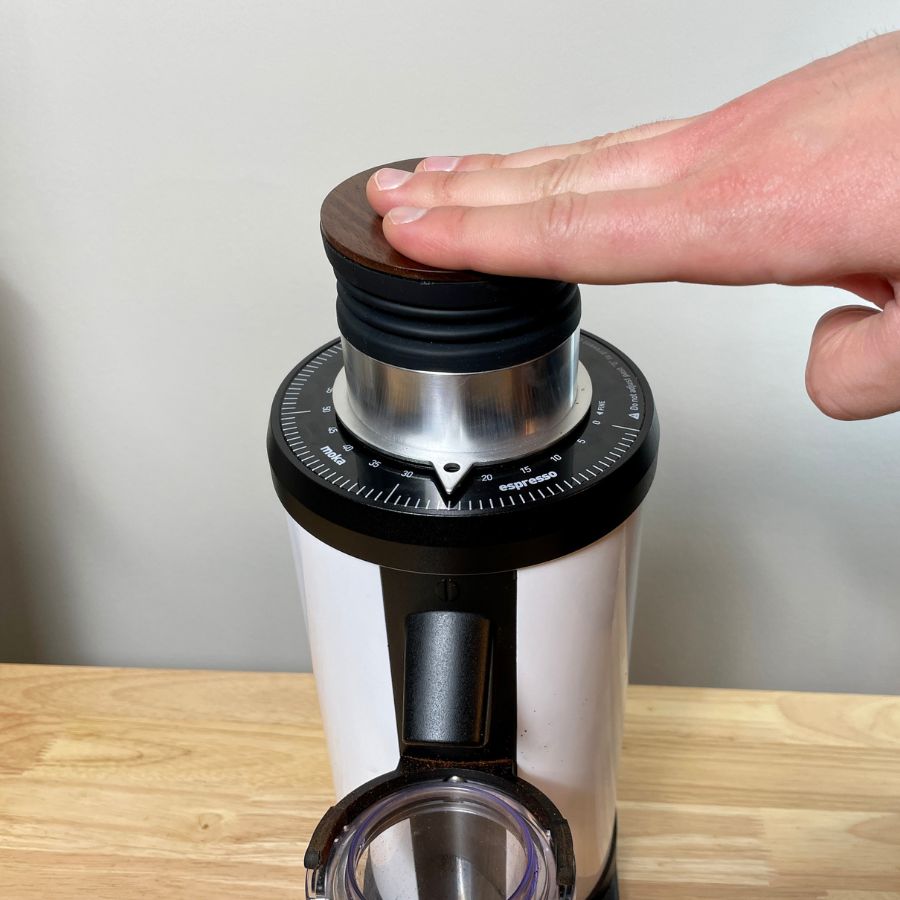
A bellow is a great trick to transform your device into a low-retention grinder. Make sure to pump the bellow with the motor running for a few seconds after you’re done grinding, and the grinder will cough out most of the leftover grinds.
Overall, the bellow forces additional grinds out, reduces retention, and vents directly into the cup.
DF64 comes with a bellow, but you can now find them for many other grinders as well. You can find a few below:
Best Low Retention Grinders
We recommend three grinders that have low retention at a good value.
1. DF64
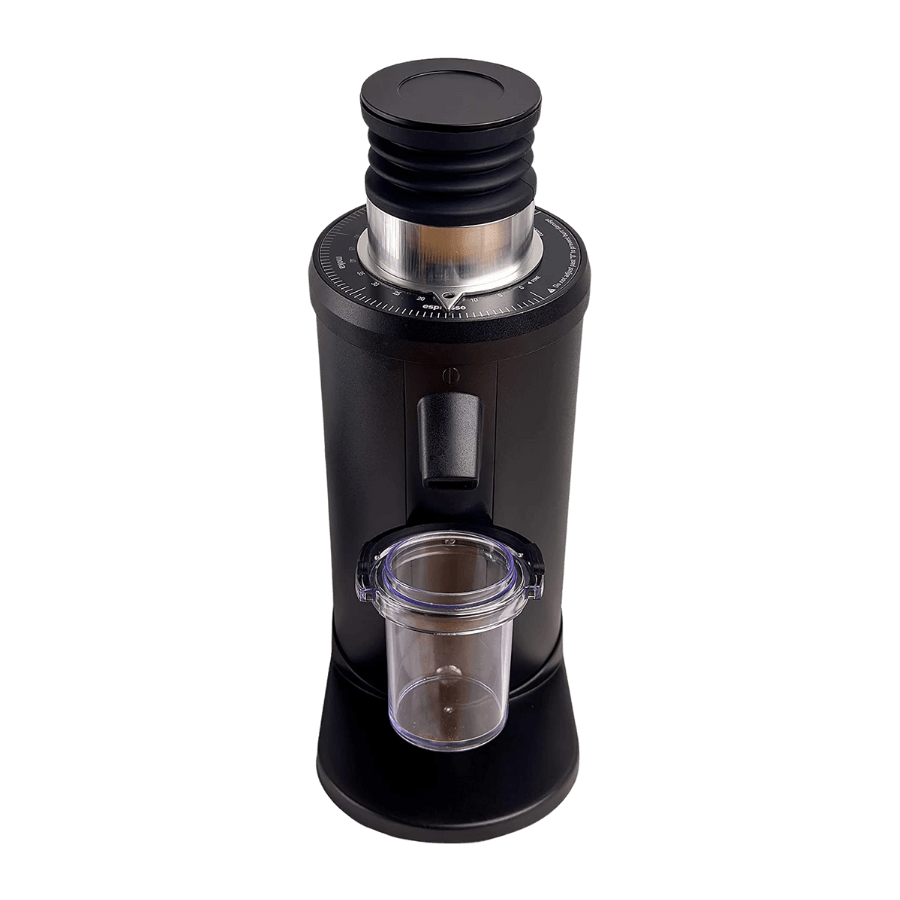
DF64 highlights:
- Bellow system on top
- Tubular design
- Single dose grinder
DF64 is a compact, single-dose grinder. It has a basic bellow system on top. This is one of the best grinders if you want minimal retention. It’s a flat burr grinder. Even though flat burrs usually retain more grounds than conical burrs, that’s not the case with DF64, thanks to the bellow design. Its retention is under 1 gram.
There’s also an aluminum adjustment ring with 90 grind settings ranging from ultra-fine to very coarse. It’s a stepless doser, so you have infinite precision in dialing in the perfect brew for your coffee maker.
The DF64 is also designed to reduce retention. The grinder is angled forward, so the grounds naturally fall through the burrs and through a straight chute. There’s a catch cup right under the chute as well, which conveniently collects the grounds.
One downside is there’s a decent gap between the cup and the chute, which leaves too much room for static to cause the grounds to fly all over and make a mess. There are 3D printed add-ons (like a tilted cup holder) that help here, and overall the burr and grinder design are excellent.
Lastly, there is an upgraded version, the DF83, that uses bigger burrs. Typically, bigger burrs mean more retention, but early reviews suggest that hasn’t been an issue for the DF83. It’s worth checking out to get that extra bump in quality from bigger burrs at a higher price.
2. Baratza Sette 270

Baratza Sette 270 highlights:
- The design makes the grounds fall vertically from the burrs straight to the portafilter.
- Time-based dosing
- Micro grind settings
Baratza Sette 270 has two dials: a larger “macro” one with 30 settings and a second “micro” dial that offers nine steps (for 270 settings in total, hence the name). There’s also time-based dosing and the option to store up to three doses, so you can switch between single and double shots when using espresso machines.
It has a unique design that minimizes retention. There is barely any chute as the catch cup sits directly below the burrs. Baratza made an angled design with the motor on top so any cup or portafilter can fit underneath the burrs.
While the grinder produces consistent and fluffy grounds with very low retention, there are real downsides. The biggest issue is noise; it’s extremely loud because of the plastic casing surrounding the motor. The micro-adjustment can be a little clunky if you’re trying to dial-in an espresso when you’re in between macro adjustments.
For good reasons, this is a popular grinder, but be mindful of the noise and workflow.
3. Baratza Vario
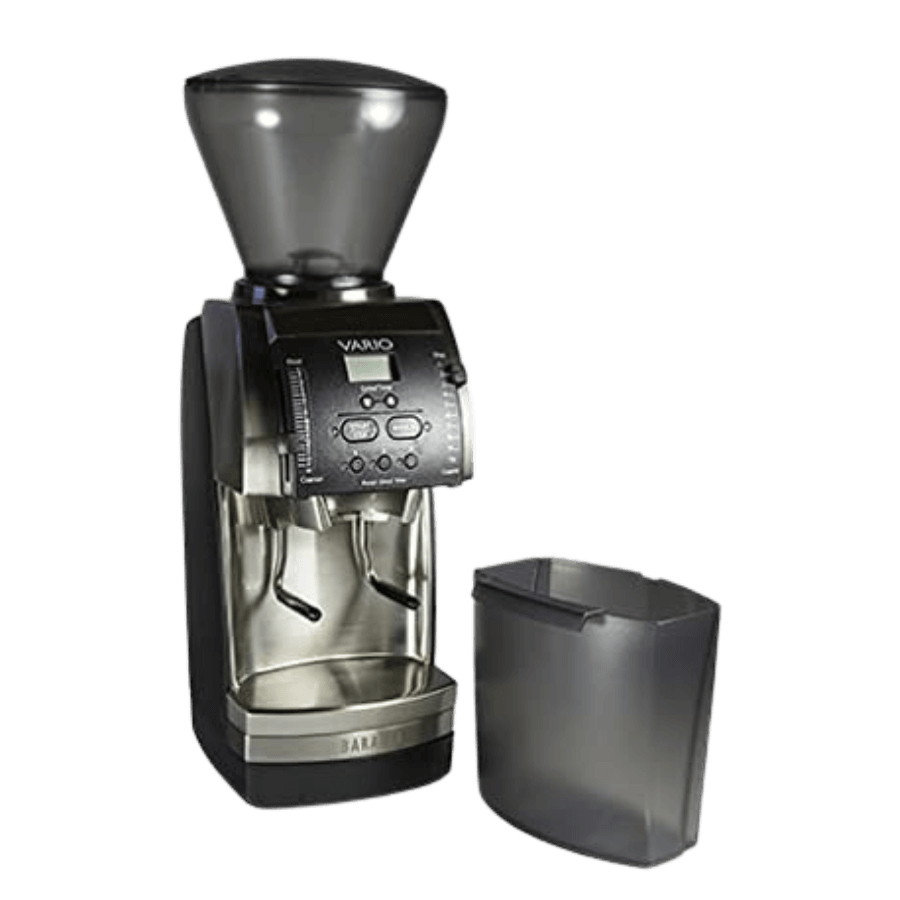
Baratza Vario highlights:
- Ceramic burr grinder
- 230 grind settings
- Comes with a calibration tool, so you can set it as you need
Baratza Vario is a 54mm ceramic burr grinder. It has programmable timed grinding, so you can dose on demand. The dual cam grind adjustment lets you fine-tune the grind across 230 settings.
This coffee grinder produces a very consistent grind, thanks to the flat ceramic burrs. You can use it for your drip coffee maker, pour-over, and espresso machines. It produces particles from 230 to 1150 microns, so it’s extremely versatile.
Grind Retention: Final Thoughts
If you use a grinder in a coffee shop where you make drink after drink, grind retention isn’t as important because grounds don’t have time to go stale. But, if you use the espresso grinder at home with hours between grinding sessions, it’s more important. Look for low-retention grinders, and use a bellow to reduce retention.
If you want to learn more about grinders, check out our comparison of burr and blade grinders.


